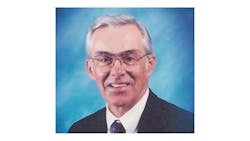I can still remember the “ice man” coming to our house in the 1930s and early 1940s to put a block of ice in the ice box, the predecessor to the common household refrigerator.
Ice boxes date back to the days of ice harvesting, which had hit an industrial high that ran from the mid-19th-century to the 1940s, when the refrigerator was introduced into the home. Ice was harvested in winter from snow-packed areas or frozen lakes, stored in ice houses, and delivered domestically. Eventually, natural ice became contaminated from industrial pollution or sewer runoff. Early refrigerators were installed in large industrial plants to produce clean, sanitary ice year-round for home delivery.
One of the oldest forms of energy storage involves harvesting ice from lakes and rivers, then stored in well-insulated warehouses and sold or used throughout the year. The seasonal harvesting of ice was a regular practice of most of the ancient cultures; Ice was stored in caves or dugouts lined with straw or other insulating materials.
During the latter part of the 19th century, refrigerated train cars were invented for shipping produce. The first of these were cooled by blocks of ice housed in insulating material.
In recent years, the use of ice has come full circle. Schools are being designed with “ice boxes,” not for food storage, but for cooling the building. During off-peak energy demand hours, ice is being created by air-cooled or water-cooled chillers and stored in large ice tanks. Air-cooled chillers seem to require less maintenance, but may not be as efficient as water-cooled chillers, which may require additional maintenance, including chemical treatment for the water.
A full or partial thermal energy storage (TES) system is available. Designing and installing a full TES system requires a chiller and storage tanks sized to create enough ice during the night-time off peak demand hours for the next day’s cooling needs. A partial TES system uses a smaller chiller to create some ice, but the chiller needs to be used during peak energy hours. The partial system requires the use of both the ice and chiller during the extremely hot and humid days requiring maximum cooling.
With a partial-storage system, the chiller can be 40 to 50 percent smaller than other HVAC systems, because the chiller works in conjunction with the storage tanks during on-peak daytime hours to manage the building’s cooling load. During off-peak nighttime hours, the chiller creates ice in the storage tanks for use during the next day’s cooling.
This system reduces operations and maintenance costs, and the initial equipment and installation costs are virtually equal to more conventional cooling systems because of equipment size reductions balanced with the cost of ice storage tanks.
Energy consumption and costs are reduced when chillers can be operated at full load in off-peak nighttime hours; pumping energy and fan energy can be reduced by lowering the temperature of the water and the air temperature affecting the quantity of air circulation required.
In new construction, ductwork can be smaller if using a colder supply air, allowing for more usable space, even reducing floor-to-floor building height, or reducing the height of the ceiling plenum space. A reduction in the electricity capacity may be possible, which reduces the cost of the electrical service.
Retrofitting an existing cooling system can be cost-effective regarding capital and operational costs.
TES ice-harvesting systems are cost-effective when the maximum cooling load is significantly higher than the average load and the electrical utility rate structure includes high- demand charges.
Even with electrical service that does not have a “on” and “off” peak rate structure, the use of TES system still can limit the maximum electrical demand for the building and substantially reduce operating cost.
Rydeen, FAIA, is an architect/facility planning specialist and former president of Armstrong, Torseth, Skold & Rydeen, Inc. (ATS&R), Minneapolis.
About the Author
James Rydeen Blog
Architect/Facility Planning Specialist
Rydeen, FAIA, is an architect/facility planning specialist and former president of Armstrong, Torseth, Skold & Rydeen, Inc. (ATS&R), Minneapolis
